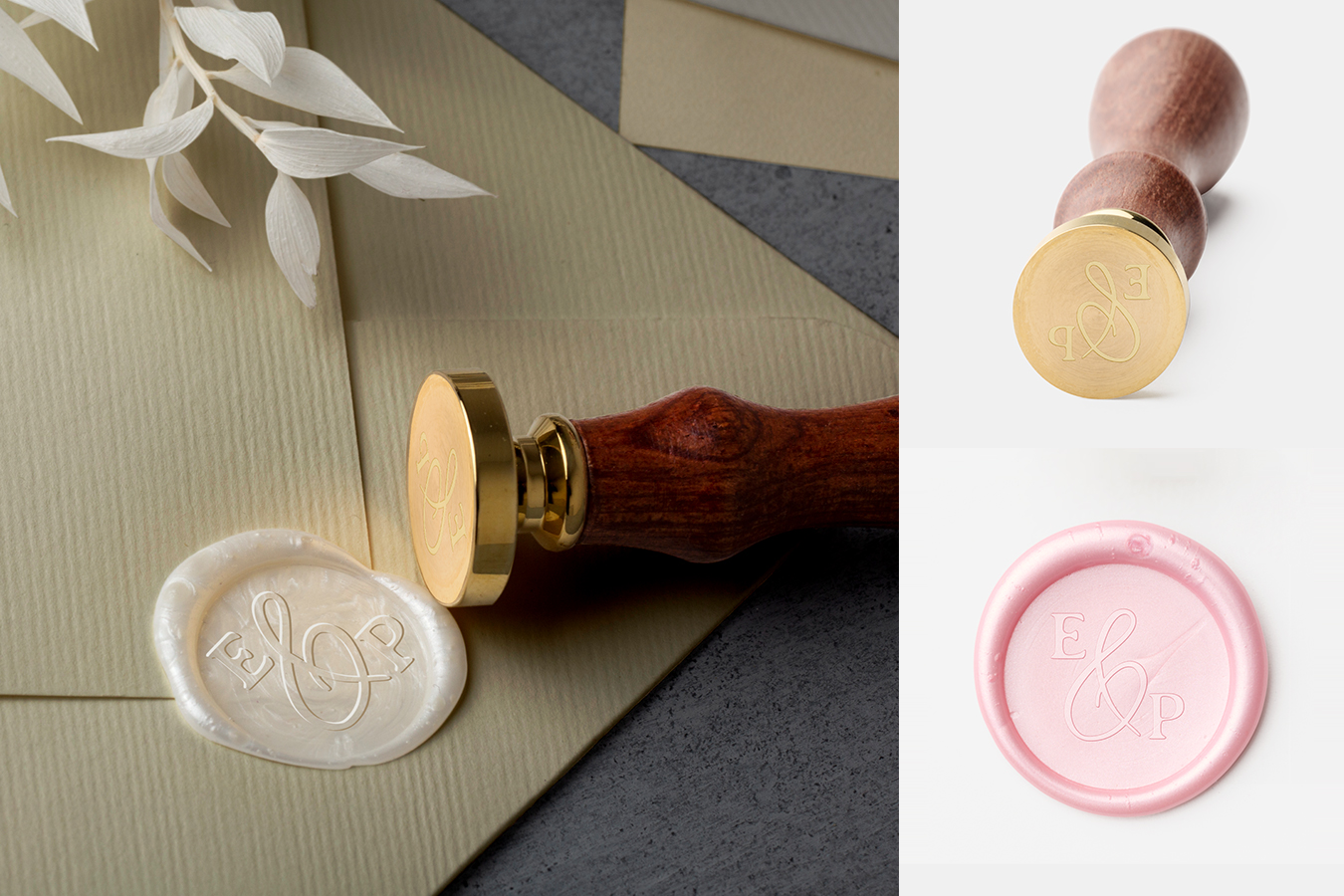Wax seals have a rich history of adding a touch of elegance to letters, invitations, and crafts. Whether you’re a beginner exploring the art of wax seals or looking to use them for specific occasions like weddings, envelopes, or stationery, this comprehensive guide will take you through the process step-by-step. Find the joy of creating timeless seals that leave a lasting impression on your recipients.
How to Use Wax Seal Stamps for Beginners
Time needed: 5 minutes
Supplies You Need:
• A wax seal stamp – choose a design that reflects your personality, the occasion, or your wedding theme
• Sealing wax – modern sealing wax beads
• A heat source – a wax seal melting spoon with a flame
• Envelopes or paper for your project
- Gather Your Materials
Grab your custom wax seal stamp, sealing wax / wax beads, heat source (melting spoon) and a candle or flame. Choose the type and color of wax that suits your needs best.
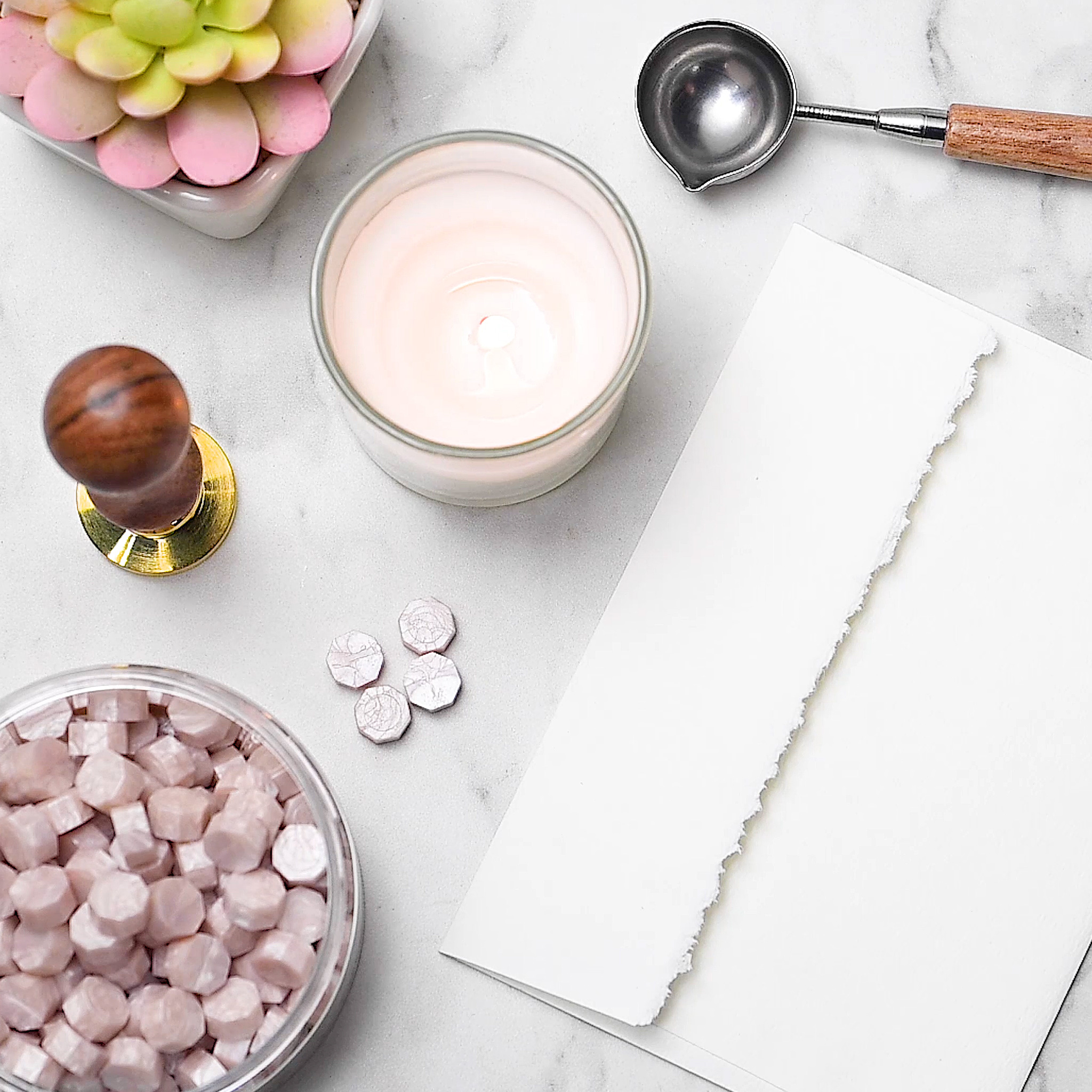
- Melt the Wax
We recommend using a minimum of 4 beads for a 0.75” wax seal, 5 beads for 1”. Place the sealing wax beads in the melting spoon above the flame until fully melted. Practice melting the wax with your chosen heat source until you achieve the right consistency. Be careful: the spoon and wax will get VERY hot!

- Apply the Wax
Gently pour or drip the melted wax onto the desired location on your envelope or paper. Be cautious not to use too much wax, as it may result in a messy seal. For wedding invitations, assemble the invitations first, leaving the envelope flap unsealed. After attaching all the elements, use the wax seal to close the flap securely.
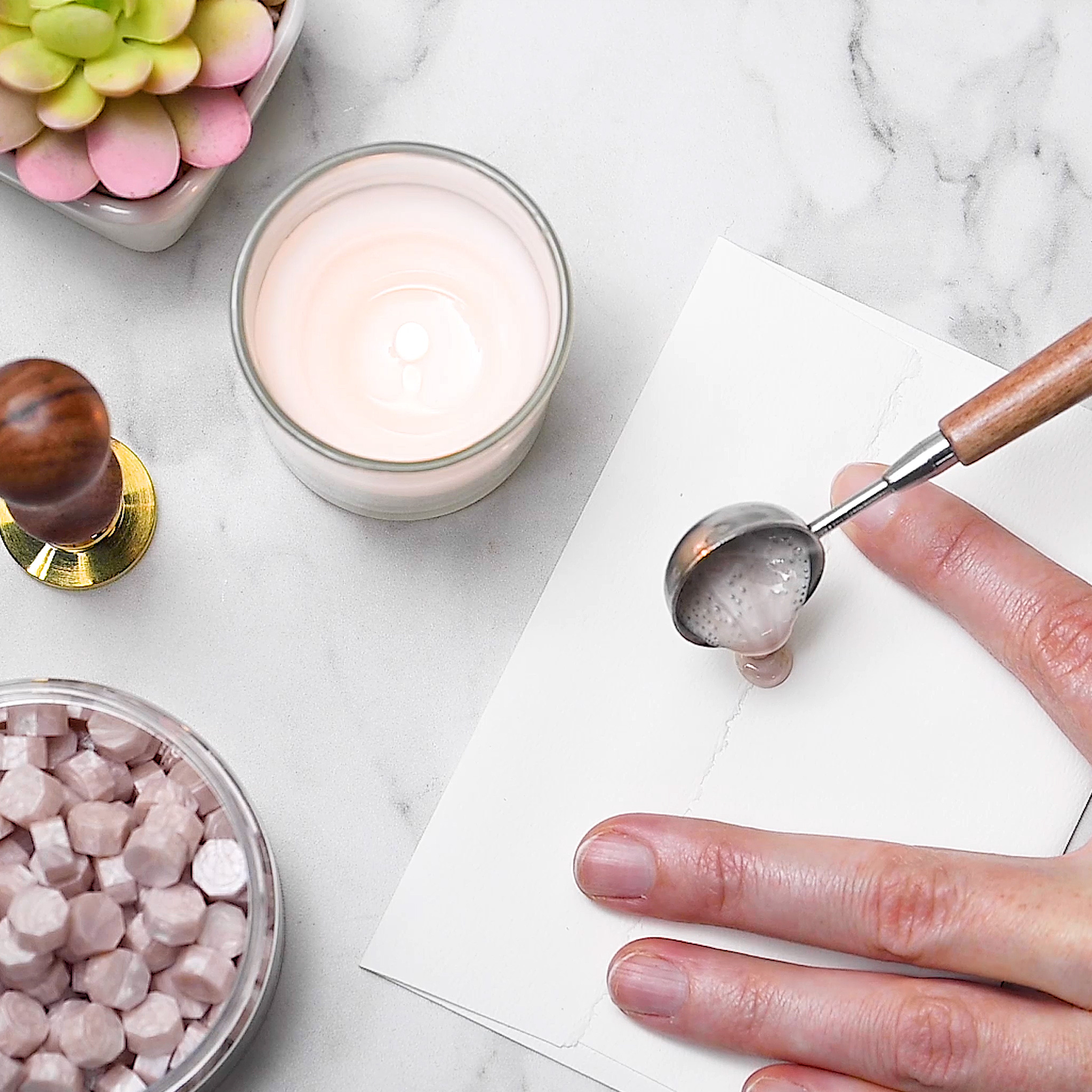
- Position the Wax Seal Stamp
While the wax is still soft, position your wax seal stamp above the melted wax. You’ll want to press hard enough to see the edges of the wax puddle spread out at the sides and all around the edges, but not so hard that the stamper pushes through the wax or so it makes an uneven impression. A clean, flat press will ensure that the entire design is pressing into the wax puddle.
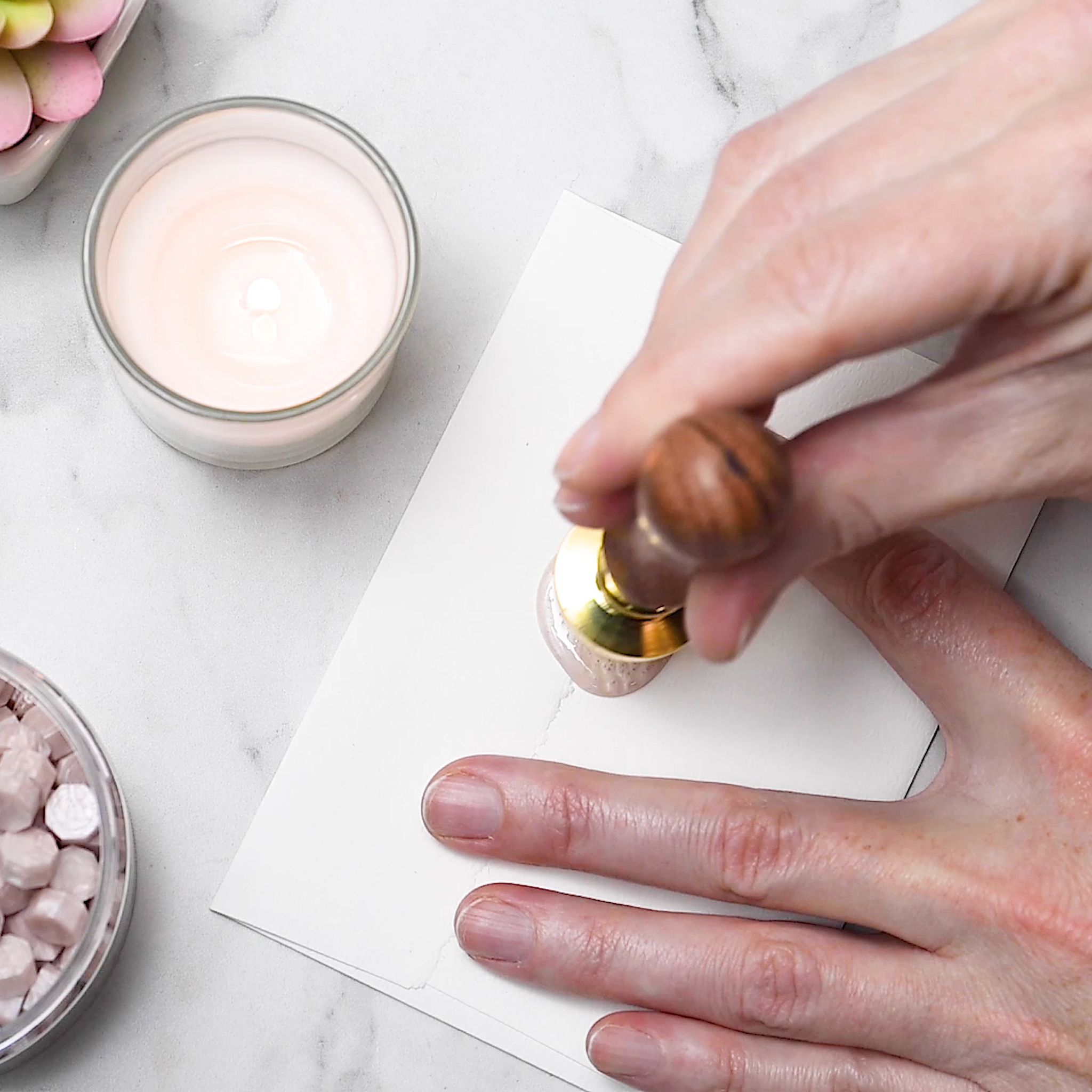
- Let the Wax Cool
Allow the wax to cool and set for about 30-45 seconds. Hold the stamp firmly and avoid making any movements for a crisp impression. After letting the stamper sit for a moment, the coldness of the stamper will cool the wax around the design.
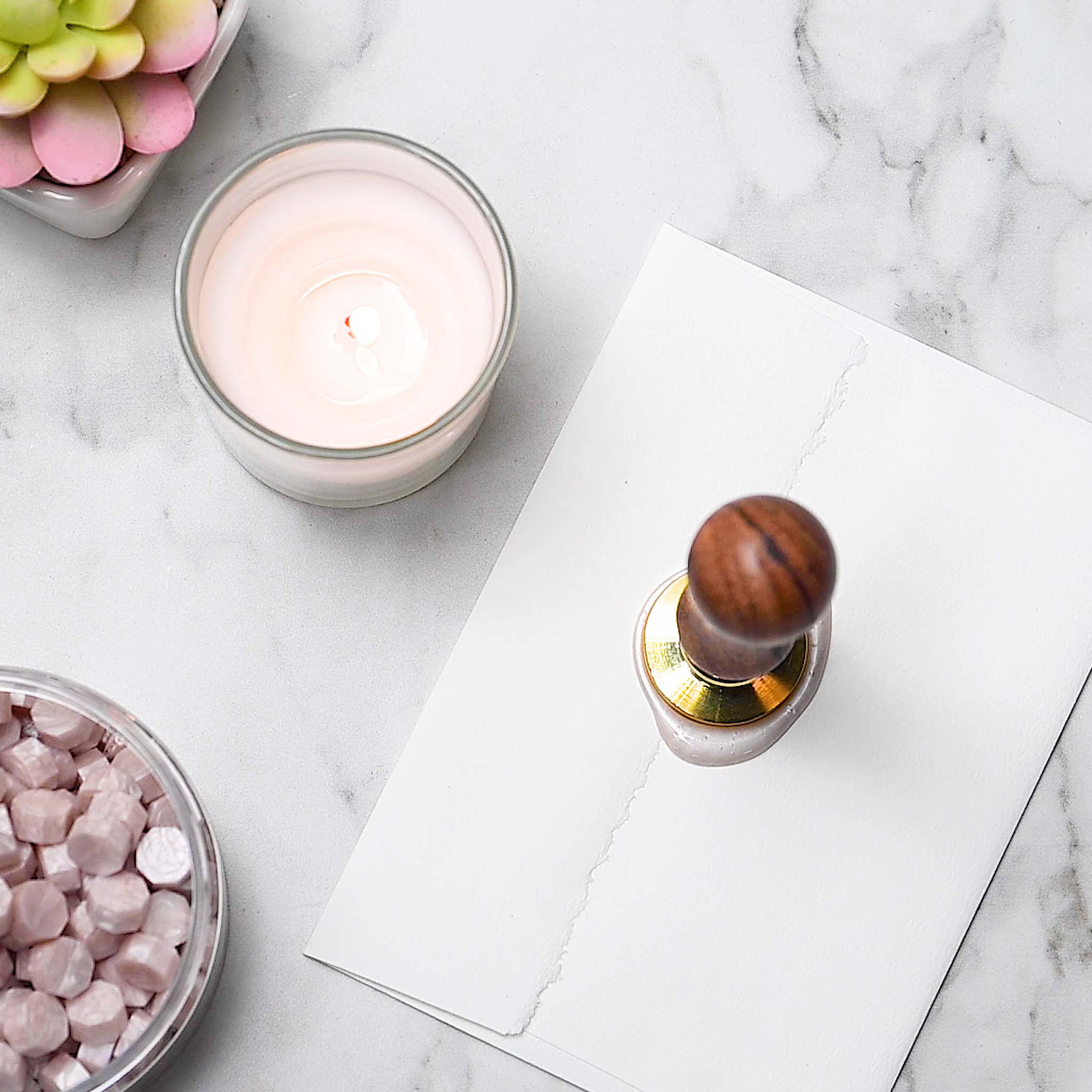
- Release the Wax Stamp
Carefully lift the stamp vertically to release it from the wax. If you notice that the stamp is sticking, wait a few more seconds before trying again. After each use, clean the wax seal stamp with a soft cloth or tissue to remove any residual wax. Avoid using water as it may damage the stamp.

Note: For beginners, don’t be discouraged if your first few attempts don’t turn out as expected. Using a wax seal stamp takes practice, so keep trying until you achieve the desired results. For weddings and special occasions, practice on extra envelopes or paper to ensure consistency in your seals.
Traditional Wax Colors & Their Meanings
Wax seal stampers have a rich history and were traditionally used to seal important documents, letters, and envelopes with a wax impression that often carried symbolic or personal significance. The colors of wax used in wax seals have been associated with various meanings and messages. Based on our research, here are some common colors and their traditional interpretations:
Red Wax: Red wax is one of the most classic and symbolic colors for wax seals. It often represents love, passion, courage, and strong emotions. In historical context, red seals were often used for documents of great importance or those related to matters of the heart.
Gold or Metallic Wax: Gold wax signifies wealth, prosperity, and high status. It’s often used for official documents, certificates, and invitations that carry a sense of importance and prestige. Metallic wax can also symbolize luxury and elegance.
Silver Wax: Silver wax represents purity, clarity, and reflection. It’s often used for documents related to spiritual matters, contracts, or communications that require a sense of sincerity and thoughtfulness.

Black Wax: Black wax is used to convey formality, authority, and solemnity. It’s commonly used for legal documents, condolences, or messages that require a serious and respectful tone.
Blue Wax: Blue wax can symbolize loyalty, trust, and calmness. It’s suitable for personal letters, communications with friends or family, and situations where a sense of reliability is important.

Green Wax: Green wax is associated with growth, renewal, and hope. It’s often used for documents related to new beginnings, such as contracts, agreements, or announcements of positive changes.
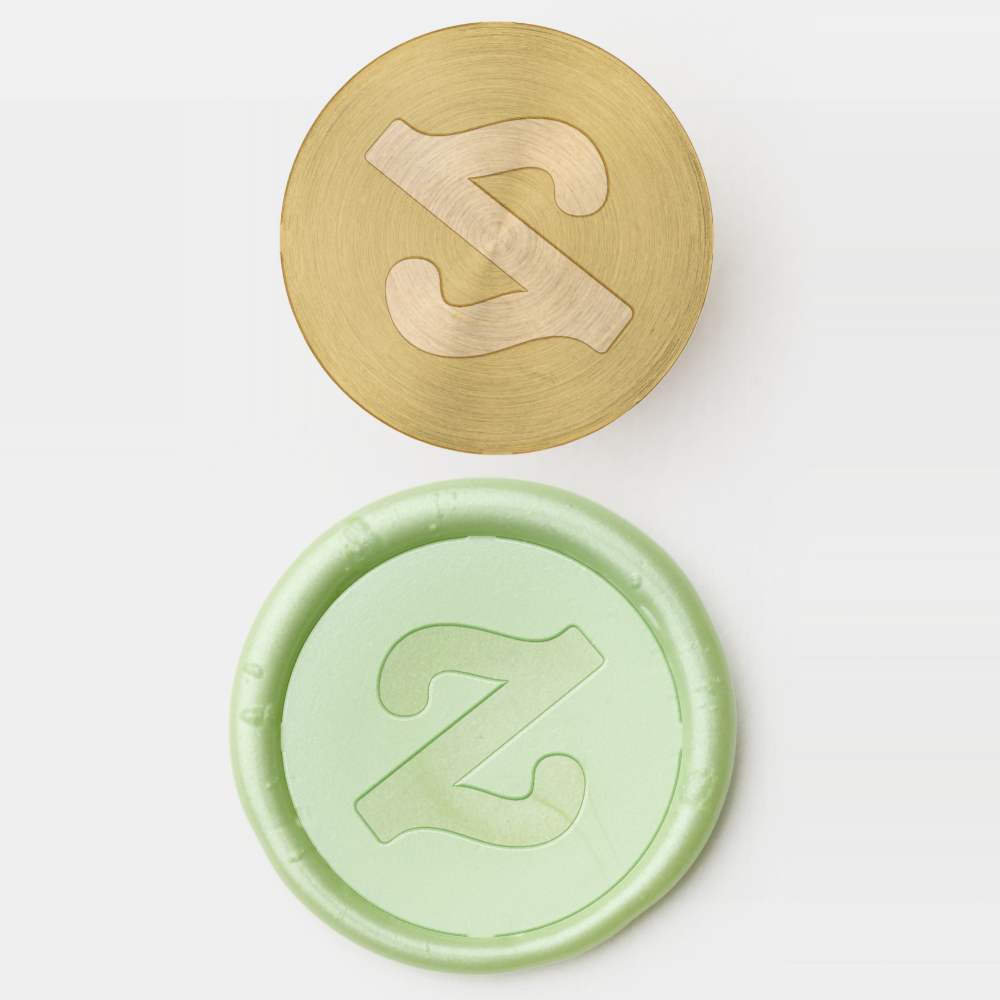
Purple Wax: Purple wax represents royalty, power, and spirituality. It’s commonly used for documents that carry a sense of authority, such as official decrees or communications from important figures.

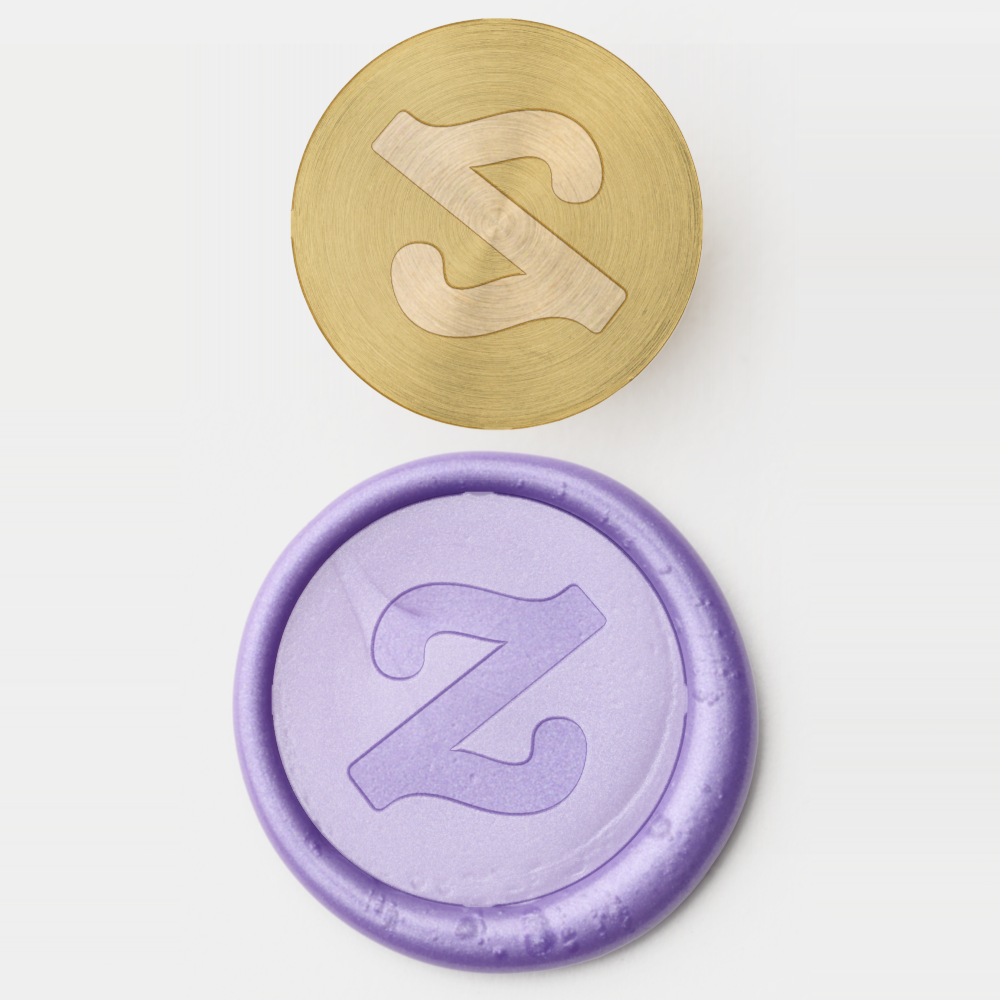
White Wax: White wax symbolizes purity, innocence, and new beginnings. It’s commonly used for weddings, christenings, and other joyful occasions that mark fresh starts.
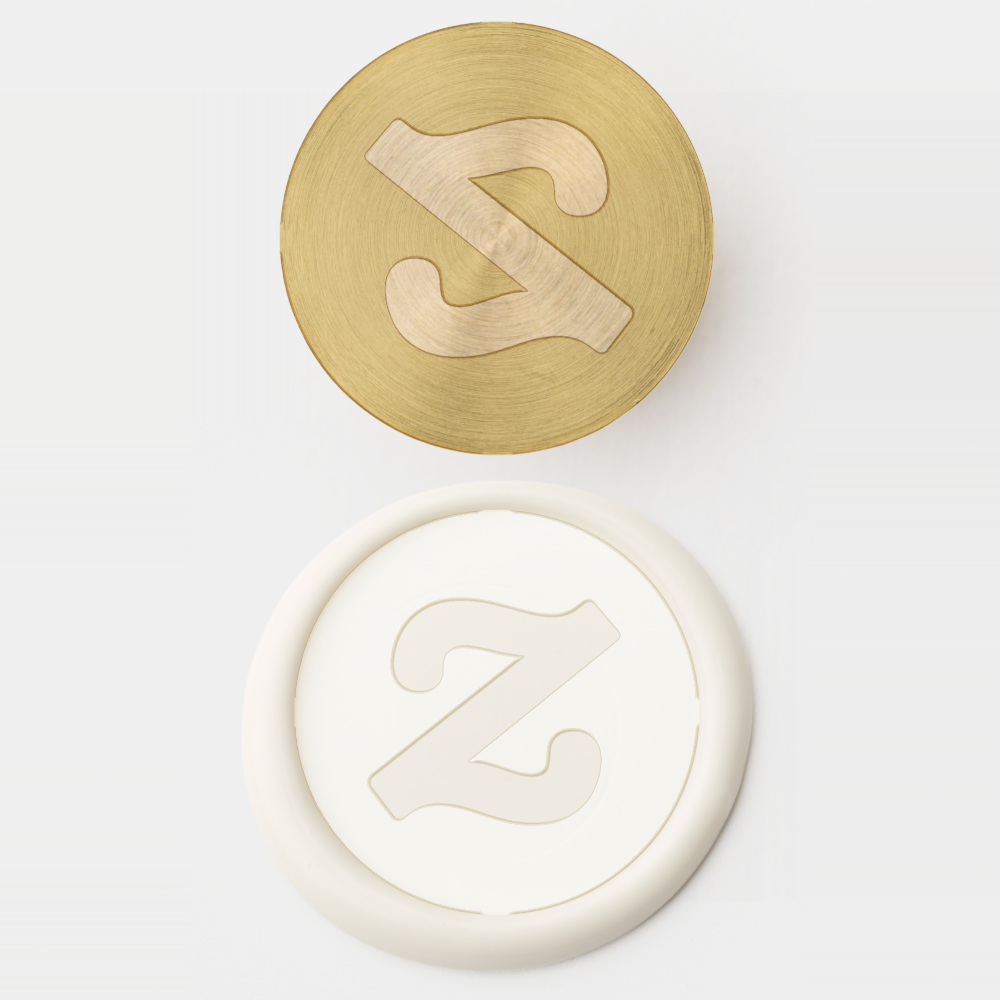
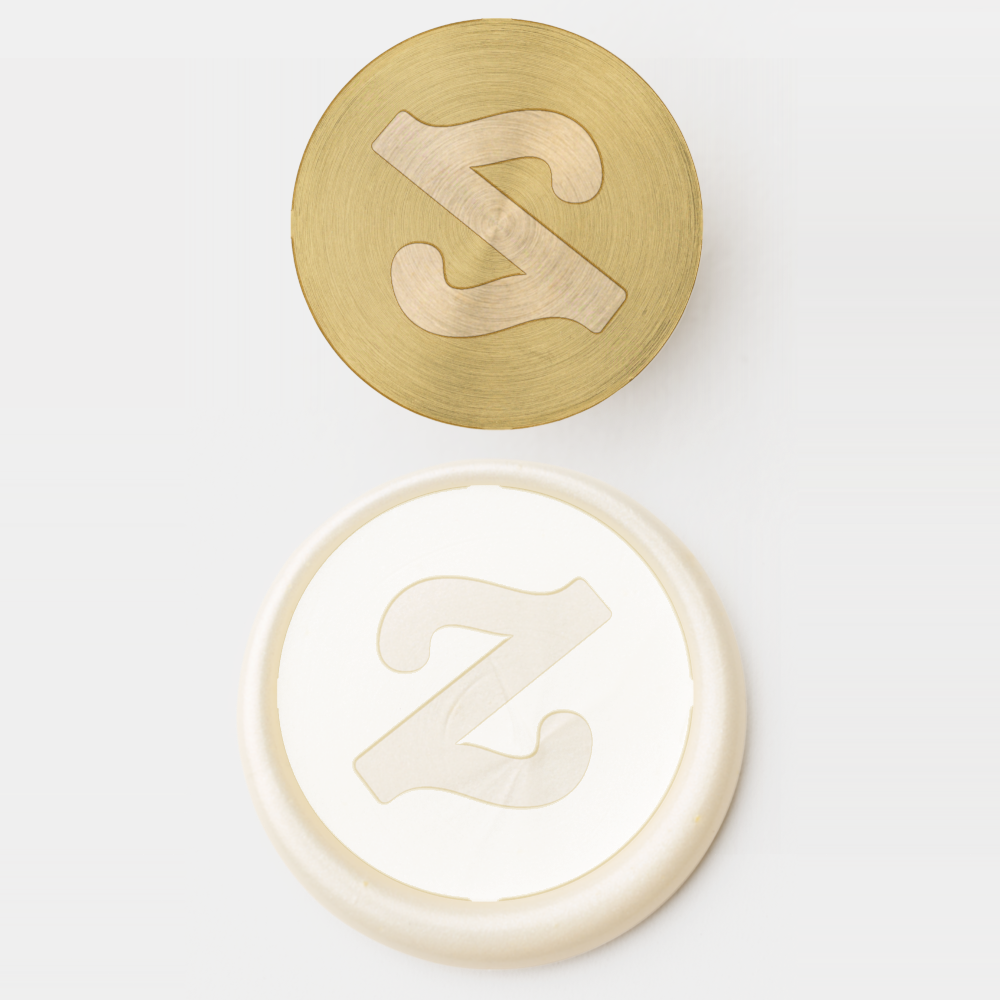
Brown Wax: Brown wax can represent stability, warmth, and reliability. It’s suitable for documents related to family matters, land transactions, and communications with an earthy, grounded tone.

Pink Wax: Pink wax is often associated with friendship, gratitude, and sweetness. It’s used for personal letters, notes of appreciation, and messages that convey warmth and affection.
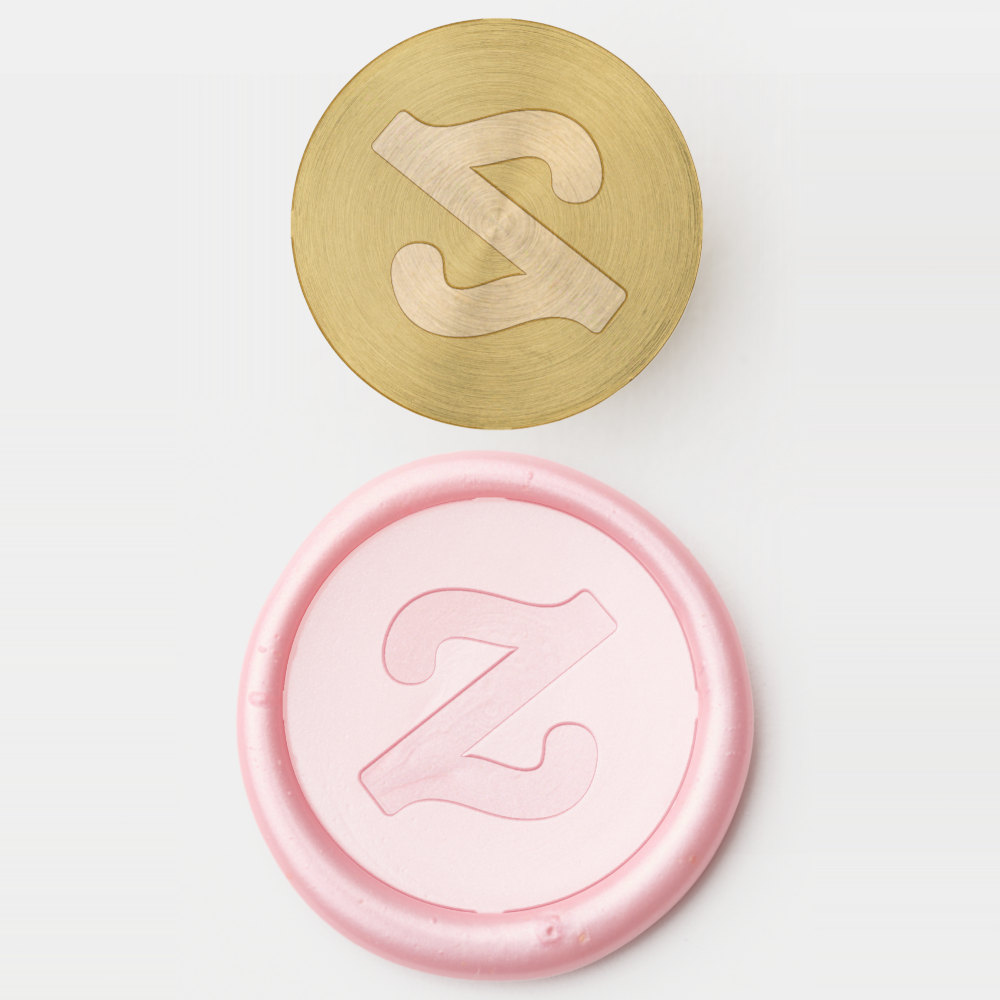
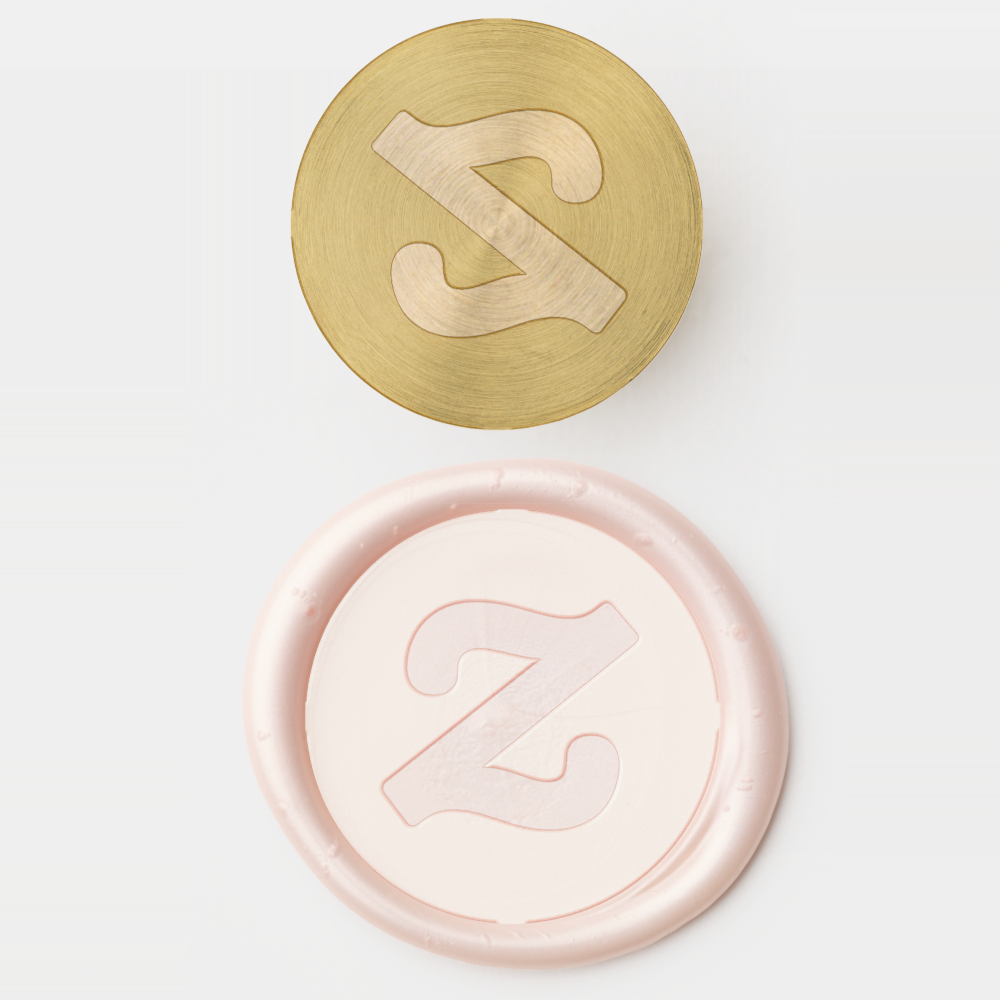
While these traditional color meanings can provide depth and sentiment to your wax seals, the interpretations might vary based on cultural and personal contexts. Also, keep in mind that modern usage of wax seals may not always adhere strictly to these traditional color meanings.
Pros and Cons of Using Wax Seals for Your Stationery
Pros for Using Wax Seals
- Elegance and Personalization: Wax seals add an elegant and personal touch to your stationery, making it stand out and leaving a lasting impression on recipients.
- Versatility: Wax seals can be used on various stationery items, including letters, note cards, certificates, and more, allowing you to customize each piece uniquely.
- Enhanced Presentation: A wax seal instantly elevates the overall presentation of your stationery, making it ideal for formal events, invitations, and special occasions.
- Tradition and Sentimentality: Wax seals carry a sense of tradition and nostalgia, evoking sentiments of a bygone era, making them perfect for sentimental and timeless messages.
- Customization Options: With a wide range of wax colors and stamp designs available, you can easily tailor the wax seal to match your stationery’s theme or reflect your individual style.
Cons for Using Wax Seals
- Time and Practice: Achieving a perfect wax seal may require time and practice, especially for beginners, which can be challenging when dealing with a large quantity of stationery.
- Messy Application: Wax seals can be messy if not applied carefully, leading to excess wax spills and potential damage to the stationery.
- Fragility during Mailing: While wax seals add charm, they may not withstand rough handling during mailing, and there’s a possibility of the seal breaking or becoming dislodged.
- Postage Considerations: When using wax seals on envelopes, consider the extra weight and thickness they add, as it may impact postage costs.
- Limited Reusability: Wax seals are generally one-time use, and removing them from stationery may cause damage or prevent resealing.
Using wax seals on your stationery offers a unique and elegant way to personalize your messages and invitations. Embrace the tradition, experiment with colors and designs, and enjoy the sentimentality that wax seals bring to your correspondence.
Keep in mind the pros and cons, and with practice, you’ll master the art of wax seal stamps, leaving a lasting impression on anyone who receives your beautifully sealed stationery. Happy wax sealing!
Nicole is our Content Strategist. She enjoys long walks to Taco Bell, rollerblading into the sunset, and eating Reese’s Cups for breakfast, lunch, and dinner. Find her writing about iPhone cases, holiday card messaging and even music festival tips!

